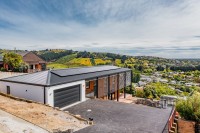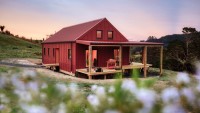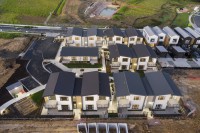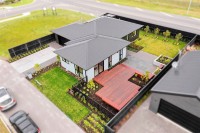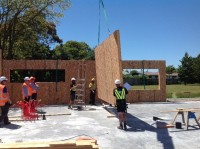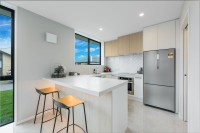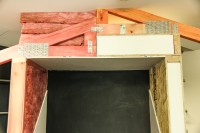Heating, Ventilation and Air Conditioning (HVAC) with Formance SIPs
DOWNLOAD FTB013 - Heating, Ventilation and Air Conditioning (HVAC) with Formance SIPs
CASE STUDY: Cashmere Energy Efficient build | Chatterton Builders
CASE STUDY: Auckland Passive Home | Kane Build Group

CASE STUDY: NZ's most Energy-efficient office | Fairfield Construction
CASE STUDY & VIDEO: Salvation Army 22 Multi-Units
Speed up your build with
Formance pre-nail
Energy-Efficiency with Formance
Minimizing air leaks, or in other words increasing airtightness, is vital to achieving optimum energy performance in a building. There are many ways in which an airtight building can be achieved. Formance SIPs, with their high R-values and air-tight construction are one of the best building systems available to provide low air leakage and overall building energy efficiency.
Along with an airtight building comes the need to provide an adequate supply of fresh air from outside. NZS 43031 stipulates a minimum of 0.35 air changes per hour as a requirement for healthy living conditions indoors.
Air quality inside a building is critical for the health of both the building and the occupants. Moisture, allergens, fumes from adhesives, smoking, and other gases and particulates can become trapped within the building. 70-80% of asthma in New Zealand is associated with allergies, and one of the most common causes of asthma are dust mites2. A fresh air ventilation system ensures the allergens are constantly being purged from the internal environment and removes the reliance on occupants opening/closing windows. The most energy-efficient form of fresh air ventilation is a Heat Recover Ventilator, or HRV. By making the building airtight, HRV’s work at their maximum efficiency and run constantly.
HRVs allow a building to remain efficient while also providing the required volume of fresh filtered air at a low operating cost. Indoor air pollutants are continuously being taken away and replaced with fresh air. This provides a healthier living environment while maintaining maximum levels of energy-efficiency.
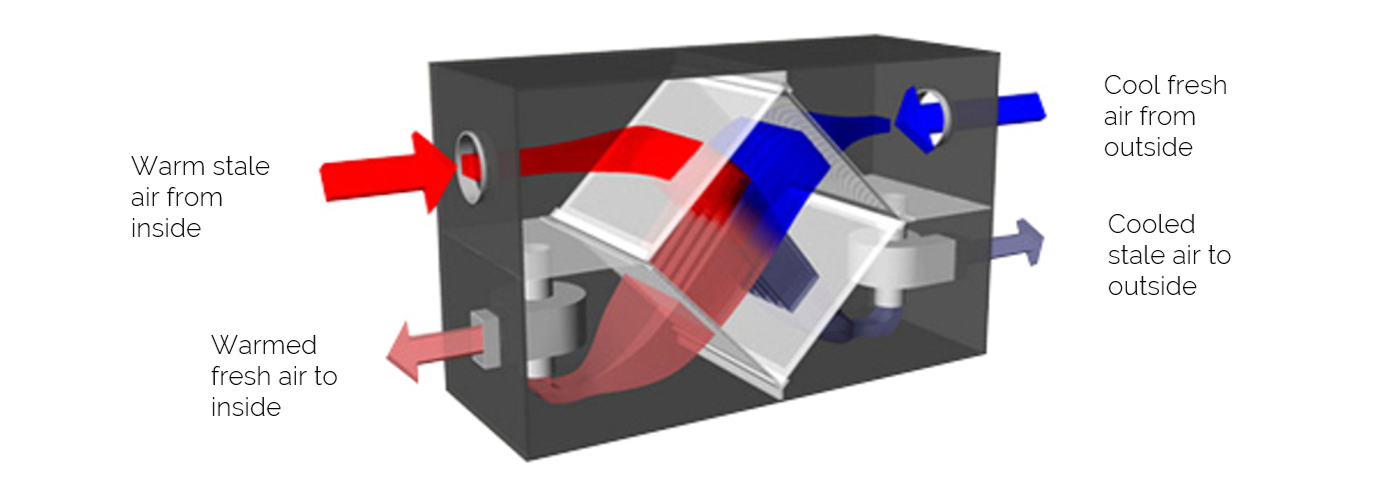
What is an HRV?
An HRV is a unit that can continually exchange stale inside air for fresh outside air, while also using the heat (or cold) from the exhaust air to raise or lower the temperature of the incoming air. A large percentage of the heat in the exhausted air can be recaptured. This efficiency allows a constant flow of fresh air but doesn’t require a separate heating unit to heat all the fresh incoming air. There are two main types of HRV, a centralized system where the heat exchanger is central to the building and ducting takes the air to and from the unit, and decentralized, where the units are self-contained and operate “through-wall”. Usually, these decentralized systems operate in pairs and cycle from push to pull to circulate the air.
There are many brands of HRV on the market in New Zealand. Contact Formance for recommendations on which systems may be suitable for your project.
How do they work?
Stale air is drawn from the bathrooms, laundry, and kitchen to the HRV, and is ducted through the HRV to the outdoors. Meanwhile, fresh outside air is drawn to the HRV, then ducted to the inside fresh air drop point. As the two separate streams of air pass each other within the HRV, they are separated by a medium that provides a conductor for the heat to be exchanged from the hot air to the cold air. The incoming fresh air is warmed by the transfer of heat from the inside air and is then ducted into the living area or furnace air supply. Excessive moisture can also be controlled with an HRV. As the air streams pass the medium, condensate will appear on the exhaust side of the medium. The condensate forms because the warm moisture-laden exhaust air cannot hold as much moisture after its heat has been drawn through the medium. The excess moisture is removed and drained away.
Running costs for HRV
HRV systems operate on very low-energy fans and control systems therefore the running cost to keep them operating is very low. Regular replacement of filters ensures they continue to function as intended and constantly filter out particulates and allergens from the air inside the home. Typically, an annual filter change is sufficient, but for higher grade filters this may need to be more frequent.
Information in this bulletin is being provided to assist you in achieving proper design, installation, and operation. Please consult a local HVAC engineer and/or contractor for the design and installation of HRVs as part of a complete HVAC design.
Heating and Cooling Systems for Airtight Buildings
A variety of heating systems are suitable for airtight buildings with HVAC systems. Underfloor slab heating, high-wall and ducted air conditioning systems and all forms of radiant heating are sensible options. Air conditioning systems (or heat pumps) offer the additional benefit of providing cooling as well.
Fireplaces (both gas and wood) are only suitable if they are approved for use in an airtight building. These systems are pre-designed to supply their own fresh air. Any system which relies on an air-leaky building envelope for supply of air to the heating appliance is not suitable for use in an airtight Formance building.
Sizing the heating and cooling capacity of appliances for Formance buildings requires understanding both the airtight nature of the building and the reduced need for additional forms of heating and cooling due to the inherently energy-efficient nature of the building. An energy assessment by a professional can be useful to get precise requirements and avoid over-spending on appliances.
Formance Warranty & Ventilation
The Formance warranty requires that a mechanical ventilating system be installed in the Formance building in order for the Formance warranty to be valid. The humidity level in a building should be controlled to <40% in winter and <60% in summer. Higher levels of moisture could lead to condensation problems.
The information in this bulletin is being provided to assist you in achieving proper design, installation, and operation. Please consult a local HVAC engineer and contractor for design and installation of HRVs as part of a complete HVAC design.
References
1NZS 4303:1990 Standards New Zealand
2Asthma and Respiratory Foundation NZ








